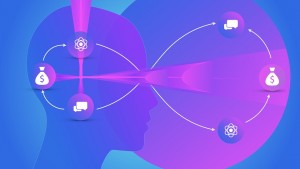 Even though the rise of the technological era has had more than a few negative implications, one of the major breakthroughs its capabilities have contributed to include senior living and elderly care. There are a number of cutting-edge assistive devices in development that can have a significant impact on an older adult’s quality of care and overall wellbeing.
Even though the rise of the technological era has had more than a few negative implications, one of the major breakthroughs its capabilities have contributed to include senior living and elderly care. There are a number of cutting-edge assistive devices in development that can have a significant impact on an older adult’s quality of care and overall wellbeing.
Fall prevention, for example, is one area on which technology can have more of an impact than previously imagined. Among older adults, over 50% of all falls take place at home, and in addition to traditional assistive devices such as Life Alert, 3-dimensional technology is becoming more optimized each and every day. Most recently, technologists at Brunel University in London conducted tests on a 3D visualization app that has the ability to guide occupational therapists through the risk-measuring process.
“Having technology that addresses issues with prescribing the right assistive equipment could have significant cost-saving implications for the health and social care system,” said Brunel’s Dr. Arthur Money.
The technology, which is still under development, shows visualizations of the most common objects linked to falls at home, including beds, bathtubs, stairs, chairs, and toilets. Users will have the unique ability to listen to audio instructions and follow arrows directed at analyzing furniture measurements.
This technology is undoubtedly important to senior care. By 2022, the Bureau of Labor Statistics projects a physical therapist employment growth of 36%, and considering the fact that more than 1.5 billion people live with chronic pain, this technology could go a long way in preventing falls and other home accidents.
The test results were published in the Health Informatics Journal. They concluded that the tool’s prototype helped experienced occupational therapists fully understand the exact measurement locations, as opposed to traditional 2D diagrams. The results also suggested that the technology can be used to help enhance the training process of junior occupational therapists.
Again, this technology is still under development, but it does have the potential to be used in a wider market than initially intended.
“A larger scale study is now underway to compare measurements taken with 3-D-MAP with ones using paper guidance in terms of accuracy and consistency,” says medicalxpress.com. “Further research will look into whether patients themselves, plus family members and caregivers could benefit.”
In similar news, virtual reality technology is also being used to improve the lives of seniors. The Rendever virtual reality system was specifically designed with seniors in mind and can vastly improve the overall happiness of nursing home residents, according to Westfair Online. Most recently, it’s being put to the test as part of the Center for Aging Innovation and Technology program at Maplewood Senior Living in Westport, Connecticut.
Ultimately, these technologies — and others like it — will undoubtedly have their place in the senior care world for years and years to come.
New technologies like VR can really expand a resident’s world,” said Brian Geyser, vice president of clinical innovation and population health. “For one of our residents, we were able to use VR to take her back to her hometown in Maine. We even visited her childhood home. We then capped off the experience with a fresh blueberry pie from our farm-to-table kitchen. It was quite a thing to see. I’m honored to be able to deliver experiences like this to our residents.”






